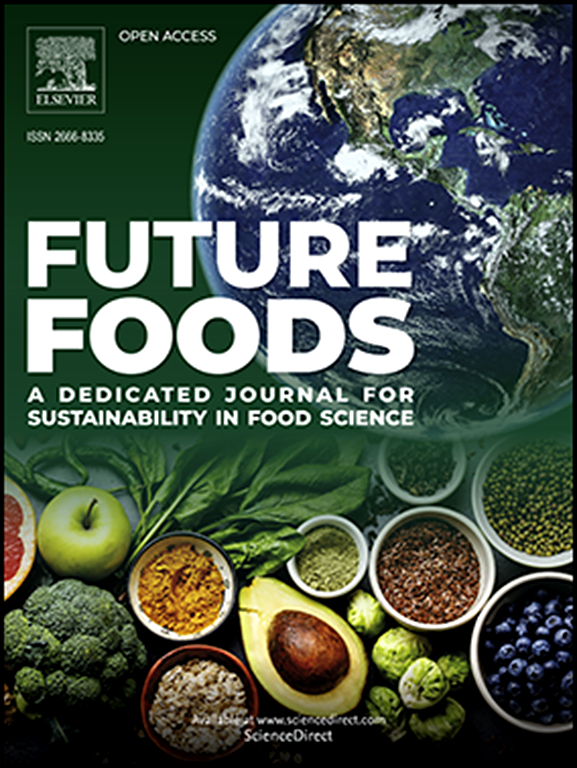使用同轴喷嘴辅助3D打印和离子交联来控制基于真菌蛋白的食品的质地
IF 8.2
Q1 FOOD SCIENCE & TECHNOLOGY
引用次数: 0
摘要
这项工作创新地将工程食品结构与增材制造技术结合起来,通过同轴3D食品打印工艺,利用丝状真菌米曲霉生物量,为不同的吞咽困难程度量身定制食品。为了3D打印具有不同纹理的样品,我们测试了不同浓度的氯化钙(CaCl2)和葡萄糖酸钙(Gluco)以及三种海藻酸盐浓度。在蒸煮前对打印样品进行结构和形态分析,然后对蒸煮后的样品进行织构分析和切削强度测量。根据国际吞咽困难饮食标准化倡议(IDDSI)指南测量吞咽困难食物水平分类。结果表明,葡萄糖对样品的质地影响很小,但对外观有影响,导致样品呈纤维状结构,硬度≈1.3 N,而CaCl2通过海藻酸盐- Ca2+相互作用使硬度从≈1 N增加到4.68 N。所有样本都通过了IDDSI测试,证实了吞咽困难个体的适用性。这种成功设计的个性化食品具有量身定制的质地,满足营养需求。本文章由计算机程序翻译,如有差异,请以英文原文为准。

Use of a coaxial nozzle-assisted 3D printing and ionic crosslinking to control the texture of a mycoprotein-based food product
This work innovatively merges engineered food structures with additive manufacturing technology to tailor food for different dysphagia levels using filamentous Fungus Aspergillus oryzae biomass through a co-axial 3D food printing process. In order to 3D print samples with different textures, calcium chloride (CaCl2) and calcium gluconolactate (Gluco) were tested at different concentrations alongside three alginate concentrations. The structural and morphological analysis of the printed samples was conducted before cooking, followed by texture analysis and the measurement of cutting strength on cooked samples. Dysphagia food level classification was measured following the International Dysphagia Diet Standardisation Initiative (IDDSI) guidelines. Results revealed that Gluco minimally altered texture but affected appearance, resulting in soft samples (hardness ≈ 1.3 N) with fibrous structures, while CaCl2 increased hardness (from ≈ 1 N to 4.68 N) through alginate-ion Ca2+ interaction. All samples passed the IDDSI test, confirming suitability for dysphagic individuals. This successfully engineered personalised food with tailored texture meeting nutritional requirements.
求助全文
通过发布文献求助,成功后即可免费获取论文全文。
去求助
来源期刊

Future Foods
Agricultural and Biological Sciences-Food Science
CiteScore
8.60
自引率
0.00%
发文量
97
审稿时长
15 weeks
期刊介绍:
Future Foods is a specialized journal that is dedicated to tackling the challenges posed by climate change and the need for sustainability in the realm of food production. The journal recognizes the imperative to transform current food manufacturing and consumption practices to meet the dietary needs of a burgeoning global population while simultaneously curbing environmental degradation.
The mission of Future Foods is to disseminate research that aligns with the goal of fostering the development of innovative technologies and alternative food sources to establish more sustainable food systems. The journal is committed to publishing high-quality, peer-reviewed articles that contribute to the advancement of sustainable food practices.
Abstracting and indexing:
Scopus
Directory of Open Access Journals (DOAJ)
Emerging Sources Citation Index (ESCI)
SCImago Journal Rank (SJR)
SNIP
 求助内容:
求助内容: 应助结果提醒方式:
应助结果提醒方式:


